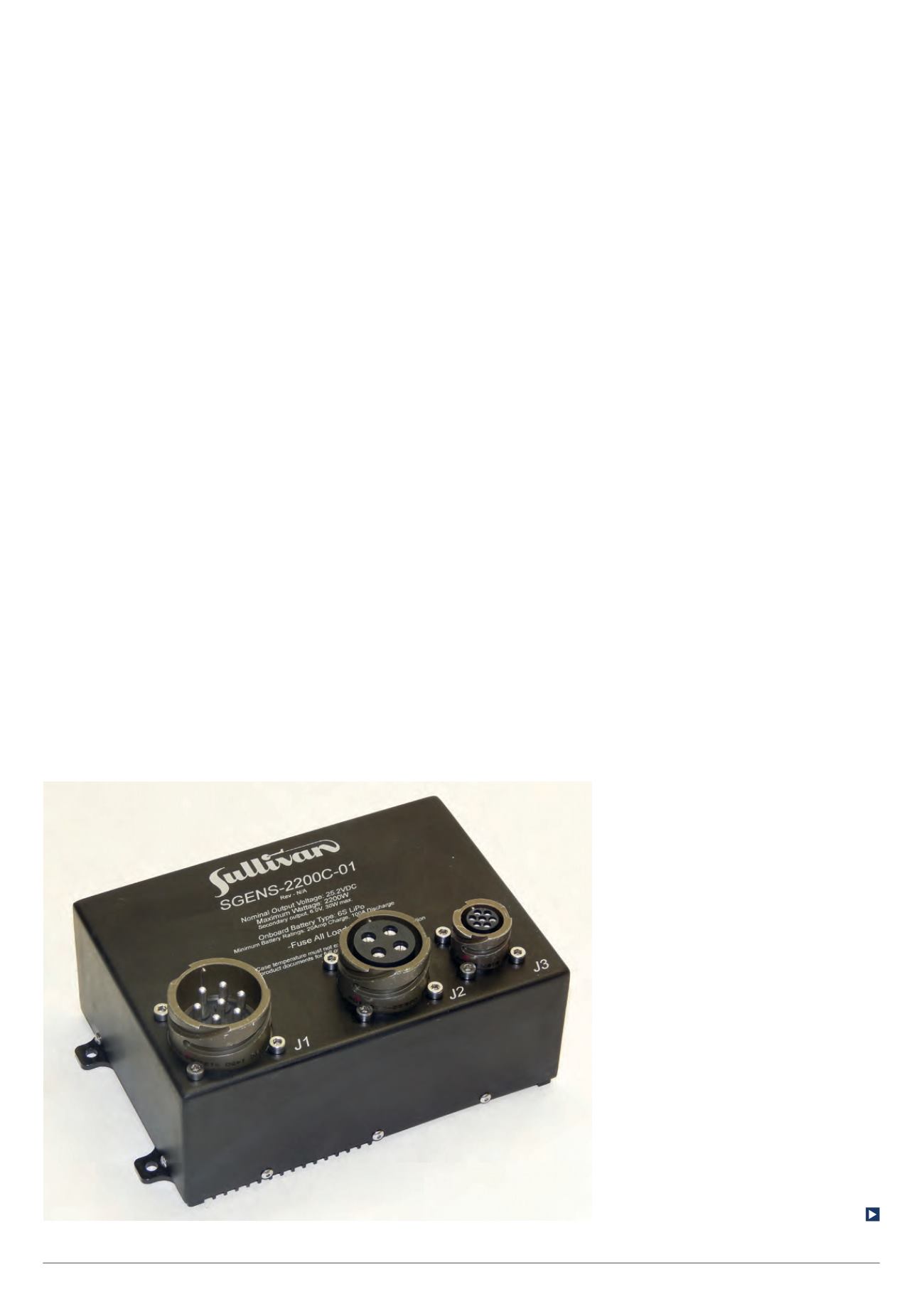

53
with 4 Gbytes of onboard memory for
data logging in a compact and robust
package rated to IP68 for deployment in
harsh environments.
Slovenian company C-Astral
provided a preview of the Advanced
Technology Light Acquisition System
(ATLAS), a new hand-launched fixed-
wing UAV that it plans to unveil at the
InterGeo geospatial event in October,
along with a higher end system, the
Bramor gPX.
Available from the fourth quarter of
2016, ATLAS is intended as a competitor
for lower-end ‘entry level’ systems
from the likes of SenseFly and Delair,
providing longer endurance and a
compact ground control station that can
be installed in a car and used with any
computer.
The mission planning software enables
multiple missions on the same flight, and
combines its functionality with situational
awareness-enabled mission flight control
software, along with common C-Astral
features such as full mission re-planning
and system control in-flight, and multiple
flight geometries and terrain-following
for stable ground sampling distance
maintenance.
With a 155 cm wingspan, ATLAS
is 82 cm long, weighs 2 kg on take-
off and packs down small enough
to be checked in as airline luggage,
C-Astral’s Marko Peljhan told us.
Powered by a lithium battery, an
electric motor and a two-bladed tractor
propeller, it offers up to 70 minutes
of flight time and a range of 60 km. It
is autonomous from hand launch to
parachute landing, is designed to be
rainproof and to resist 30 knot winds
and operate in temperatures from -25
to +45 C.
Like C-Astral’s other vehicles, the
structure is made from composite
materials reinforced with carbon, Kevlar
or Vectran fibres, with Kevlar underneath
for toughness and RF transparency for
the integrated antenna system, and CFRP
for lightness in the wings, which have
magnetically attached winglets and an
easily replaceable pitot tube.
Payload and battery modules are under
the top cover and lift out on handles.
Wiring is integrated into the structure
to minimise the risk of breakages and
shorts. Typical payload modules are EO
and multi-spectral sensors.
Hirth now offers a range of six
off-the-shelf gasoline and heavy fuel-
burning two-stroke engines for UAV
applications, covering the 8-100 bhp
range, Dietrich Kehe reported;
UST
profiled the company’s 183 cc air-cooled
twin in issue one. The current smallest,
lowest-power engine is an 8 hp air-
cooled 100 cc twin; its largest, highest
powered unit a 100 hp water-cooled
939 cc inline three. The respective
weights are 3.4 and 47.5 kg.
Lee Estingoy reported that a new
development from Hacker Motor is
a range of servos that have two-way
communications yet are “standard price”
rather than high end in terms of cost.
They feature a digital encoder, he noted.
Established supplier of generators
for UAV applications, Sullivan, is
now involved in developing hybrid
powertrains for multi-rotor use. James
Hudson explained that the concept is to
use an internal combustion engine solely
to drive a generator that in turn supplies
the electric motors powering the four or
more rotors.
In this series hybrid arrangement,
the IC engine and electric motors
are linked by an appropriately sized
Sullivan generator and associated power
management unit, which means that no
battery is required.
Quadcopter and similar UAVs are
notoriously energy-hungry. The upshot of
the hybrid solution, said Hudson, is that
the craft can fly further for a given take-
off weight. That is not only because the
fuel for the IC engine is far more energy-
dense than a state-of-the-art battery but
also because as the mission proceeds
its weight diminishes, whereas that of a
battery is consistent.
An alternative is to use a small battery
to fill the gap between a system sized
for average power and the peak power
requirement for take-off. Hudson told
Unmanned Systems Technology
| June/July 2016
The power management unit for
Sullivan’s hybrid powertrains









